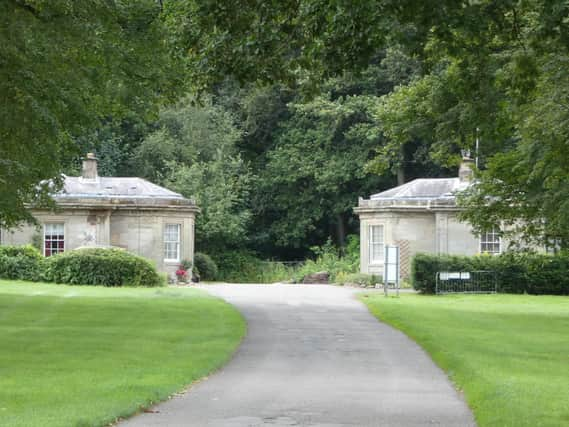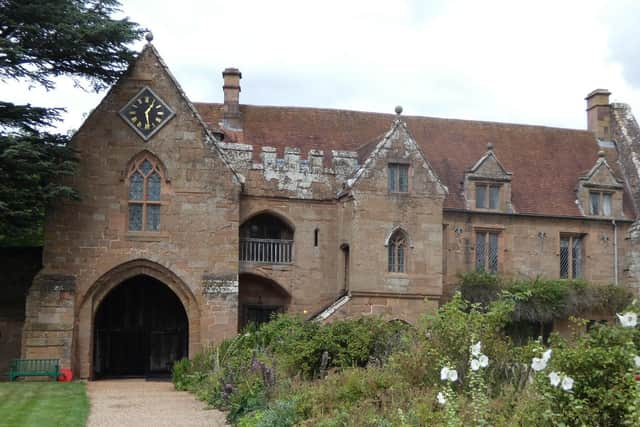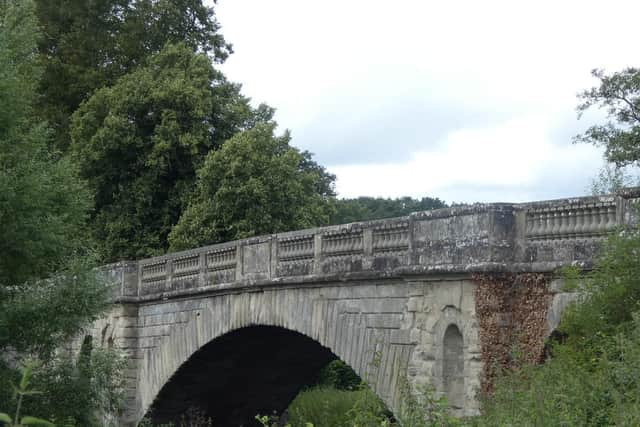Forgotten local histories: Exploring the history of Stoneleigh Abbey


Nestled on the banks of the Avon, just east of Kenilworth, Stoneleigh Abbey is a name familiar to many Warwickshire residents. This week, local historian George Evans-Hulme explores the history of the abbey, with particular focus on its gardens and the dramatic early social history of the site.
Forgotten Local Histories – Stoneleigh Abbey I
It is difficult to disagree with the historian William Smith when, in 1830, he wrote that Stoneleigh Abbey is ‘situated in one of the most luxuriant and picturesque parts of the country’. Indeed, to appreciate its beauty, one need only wander down the lime tree lined avenue and stand and pause for a while atop the beautiful bridge (designed by John Rennie and built c.1813-14) halfway along


Advertisement
Hide AdAdvertisement
Hide Adthe west drive of the abbey, gazing out over the vast lawns and cleverly sculpted fields that surround it.
The beautiful gardens are no accident. The Rev. Thomas Leigh (of whom, more in the next Forgotten Local Histories article) commissioned the eminent landscape architect Humphry Repton to compile a set of proposals to transform the abbey grounds. These proposals arrived in 1809, in the form of one of Repton’s famous Red Books (so called because of their colourful bindings) and work began soon after. The succeeding years saw the widening of the river to create a lake at the front of the house, and the creation of a reflecting pool on the south side of the property.
Equally, Repton suggested the erection of various structures at strategic locations around the abbey park. However, many of his architectural suggestions went unbuilt. One historian has suggested that this could be because Repton, unlike other landscape gardeners (such as Capability Brown), did not become heavily involved in supervising the implementation of his designs. Therefore, it is not surprising that, given his lack of presence, his designs were sometimes ignored or amended without consultation.
At Stoneleigh Abbey, an example of this can be seen in the two, single storey, Grecian-style lodges that guard the west entrance to the estate. Whilst located according to Repton’s plans, Pickford and Pevsner (2014) reveal that they were not built under his supervision or to his design.


Advertisement
Hide AdAdvertisement
Hide AdMoving on to the abbey itself: the abbey of Cistercian monks from which the site draws its name was first located to Stoneleigh in c.1154-56 during the reign of Henry II. Unfortunately, the majority of the original structure does not survive; but many elements of it can be seen integrated into the current building (the best surviving example from the abbey period is the gatehouse, built c. 1342-45
and the adjacent Hospitium, c. 1349-50). However, the beauty of Stoneleigh Abbey does not lie solely in its architectural history.
Dugdale, writing in 1656, reveals two fascinating insights into life at the abbey. The first concerns the 9 th Abbot, William de Gyldeford who, in 1235, was deprived of his office as a consequence of his endorsement of extrajudicial process. Indeed, de Gyldeford both countenanced a shepherd (who was associated with the abbey) to ‘fight a duel’, and later authorised the hanging of a thief who stole some cattle owned by the monastery. Neither of these activities were deemed appropriate for a senior member of the clergy.
The second is the story of Thomas de Pipe, Abbot of Stoneleigh Abbey in the mid-14 th century. Dugdale relates that, in 1365, a complaint was registered against de Pipe for his use (or misuse) of ‘several farms and lands’ that were owned by the abbey as accommodation ‘for the support of a concubine that he had, called Isabell Benshale, and his children by her, which were more in number than the monks then in the convent’. The antiquarian goes on to say that the number of children was as high as 20.
Advertisement
Hide AdAdvertisement
Hide AdHowever, Dugdale offers a reputational reprieve for the abbot by suggesting that he was ultimately a ‘person of notable parts’ who had been responsible for the production of a ledger that proved to be a historical source of ‘much use’ to Dugdale in the compilation of his history of Warwickshire. The ledger, he says, will ensure that de Pipe’s memory will be held in ‘good esteem with all [who] are
lovers of history’ - the controversies in de Pipe’s private life notwithstanding, of course. Ultimately, these tales can be regarded as apocryphal, but they help to illustrate that life in the past was often dramatic, and not always as simple as we may assume.
It is hard to imagine all of this controversy when one is stood on the Rennie bridge. Indeed, in that moment, particularly when leaning against the southerly balustrade, it is easy to get lost in the serene nature of the place – listening to the rustle of the wind in the trees and watching as the River Avon silently glides over the reeds before flowing steadily on towards the village of Ashow, and the towns of Warwick and Stratford in the distance.
Next week’s Forgotten Local Histories article will return to the subject of Stoneleigh Abbey, shedding light on the abbey’s connection to royalty, its inspiration of Jane Austen and as a place hiding a dark secret.